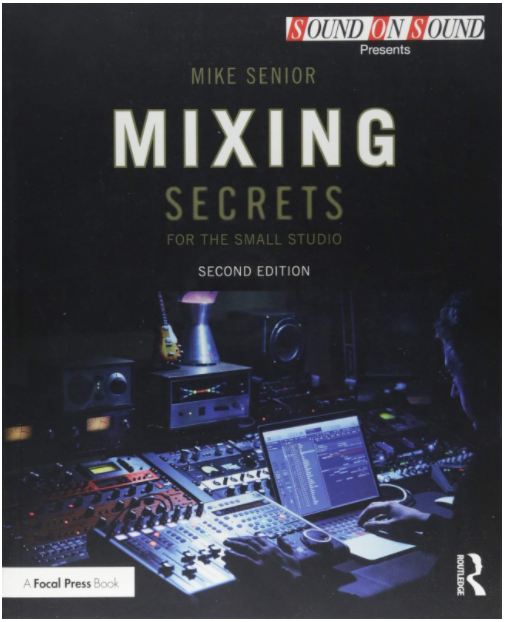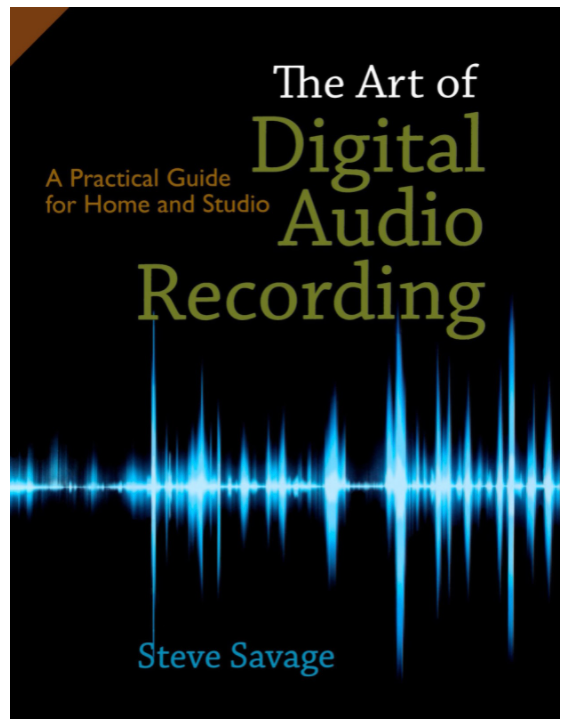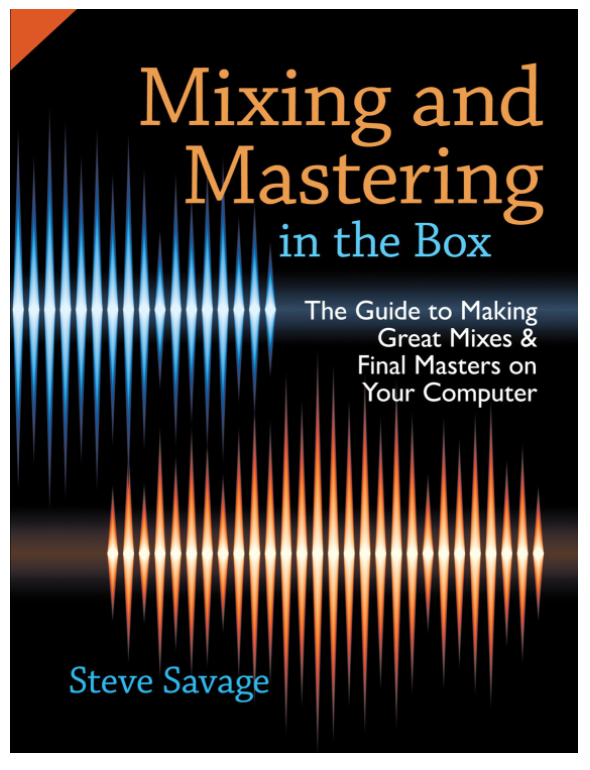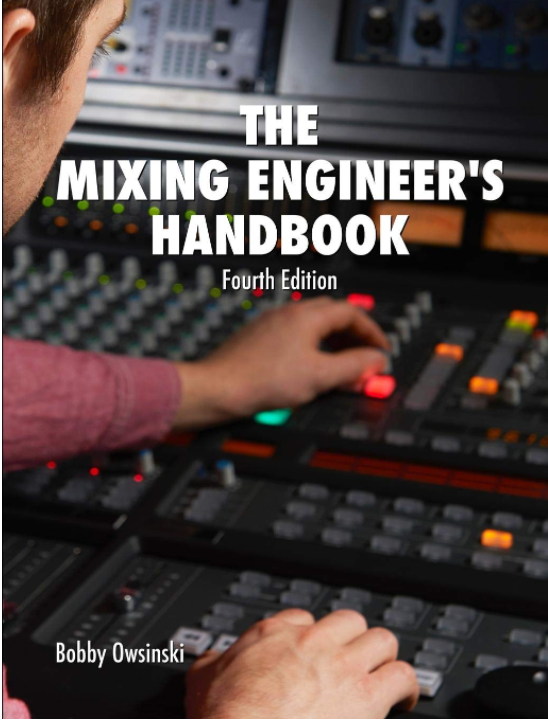Best books for mixing and mastering
Table of Contents
It doesn’t matter if you’re a complete novice or a total pro. We all need to brush up on our skills to keep them in tip-top shape.
Reading the right books can easily help you stay on top. That’s why we’ve found the best books for mixing and mastering.
They each have different things to teach you, and can help you hone your skills. Reading the following books can take you from zero to hero:
- Mixing Secrets for the Small Studio
- The Art of Digital Audio Recording
- Mixing and Mastering in the Box
- The Mixing Engineer’s Handbook
- The Mastering Engineer’s Handbook
What are the best books for mixing and mastering?
Once you’ve given yourself an understanding of mixing and mastering, put it into practice. If you need to keep certain passages open and refer to them, then do it. Edit your audio in the way that’s best for you.
Below are the best books to help you become a master in the sound studio.
Mixing Secrets for the Small Studio
Mike Senior

You don’t need a professional studio to make top-quality audio, and Mixing Secrets for the Small Studio proves it.
What you do need is fundamental knowledge — both of the process and how to use your equipment. Mike Senior’s book, Mixing Secrets, can give this to you.
It doesn’t matter how old you are or what experience you already have with mixing. This book provides in-depth insight into audio mixing, and helps fill in any gaps in your knowledge.
If you haven’t bought any equipment yet, Mixing Secrets actually tells you where you can cut your costs. You don’t need to buy the best version for each piece of equipment, and using this book to manage your budget is a great idea.
It also teaches various technical aspects in user-friendly ways.
Whether you’re trying to figure out how to equalise your track, or you’re after some more advanced techniques, Mixing Secrets for the Small Studio has you covered.
The Art of Digital Audio Recording
Steve Savage

If you don’t know a lot about the sound engineering industry, then The Art of Digital Audio Recording is the place to start. Although published in 2011, the information within still holds up today.
Steve Savage’s book provides an excellent overview of the entire audio process. From what to look for in a recording environment to practical applications of mixing and mastering, reading this should help you better understand the business.
There’s also a section to help you overcome some common recording studio challenges, such as:
- Being the engineer in a commercial studio.
- How to research and buy equipment.
- The types of digital audio formats.
If a general overview of the process is what you’re looking for, then definitely give The Art of Digital Audio Recording a go.
Mixing and Mastering in the Box
Steve Savage

If you’re looking for a two-in-one mixing and mastering masterclass, then try out Mixing and Mastering in the Box. Written by Steve Savage, In the Box gives you the tools to produce some fantastic sounding tracks.
While the book focuses on using a Digital Audio Workstation for mixing and mastering, the information applies to analogue gear too.
The book goes over how to use features like:
- Equalisation.
- Compression.
- Reverb .
- And more.
These techniques are intended for people who already have a working knowledge of mixing and mastering. If you’re a complete beginner, you may want to check out some of the other books on our list first.
Mixing and Mastering in the Box is a worthy contender if you need to touch up your mixing and mastering knowledge.
It was published in 2014, so some of the information may be a little out of date, but it still remains an excellent guide.
The Mixing Engineer’s Handbook
Bobby Owsinski

Bobby Owsinski’s The Mixing Engineer’s Handbook is a detailed guide into the best practices when mixing audio. The book breaks down mixing into simple and understandable steps, perfect for helping you deliver results in the studio.
The Fourth edition was only published in 2017, so it’s a pretty recent version. If you want some info about what’s inside, the book breaks down the following:
- Six elements of a mix.
- Secrets of equalisation and ‘magic frequencies’.
- Advanced techniques, like pitch correction and track clean-up.
- Easy methods for adding effects.
These are just a snippet, and there are many more topics covered in The Mixing Engineer’s Handbook. To find out what they are, you’ll have to read it!
It even contains interviews with some of the industries professionals, letting you benefit from their thoughts and experiences. Widely regarded as one of the best texts for learning the craft, you can’t go wrong with this in your arsenal.
The Mastering Engineer’s Handbook
Bobby Owsinski

The other half to the previous entry, The Mastering Engineer’s Handbook should be your go-to guide for the final stages of audio production. Once you’ve finished mastering a track, it’s ready for distribution.
If you’re after an up-to-date guidebook that teaches you how to make a well-mastered track, this should be your choice.
Bobby’s Mastering Engineer’s Handbook goes over new technology and techniques, giving you a fully updated grasp on basic and advanced mastering.
It even explains how to master a track for vinyl records, since they’ve been making a comeback in recent years. If you want quality information about how to produce some well-mastered tracks, look no further.
Ready for more?
Since you’re making audio as your business, you’re going to need to develop some connections. If you haven’t networked before, it can be an intimidating process but don’t worry.
We’ve got some of the best tips and tricks in our guide, ‘6 effective networking ideas for small businesses’. You can use these connections to find work.
Once you’ve built a few connections, you’ll want to start crafting your portfolio. Portfolios are great tools for showing off your abilities, and the better yours is the more work it can get you.
In case you have no idea how to make your own portfolio, we’ve written this step-by-step guide to help you. Read how to build a professional portfolio and display your talents.
Finally, if you’re interested in making the most of your money, why not check out the Countingup app? It’s the two-in-one business current account and accounting software, with all sorts of cool features built in.
With the app, you can auto-categorise your expenses, or send custom invoices directly from your phone. The Countingup app is designed to help businesses manage their money effectively, so give it a try.
Receive actionable business tips weekly
By submitting this form, you confirm that you are 16 years of age or over and that you have read and agree to our Privacy Policy. You can unsubscribe at any time.




